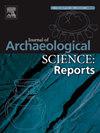中国焦家遗址大汶口时期中晚期的人类饮食与社会复杂性
IF 1.5
2区 历史学
0 ARCHAEOLOGY
引用次数: 0
摘要
学者们通常通过停尸仪式来考察中国新石器时代大汶口文化的社会复杂性,并长期以来一直认为社会分层和性别不平等都在逐步发展。新发现的焦家墓地年代为大汶口文化中晚期,这为我们提供了一个从不同角度研究社会复杂性发展的宝贵机会。我们对焦家遗址出土的人骨和兽骨进行了稳定同位素分析,以探讨人类饮食与社会复杂性之间的关系。结果表明,焦家村人的膳食以 C4 食物(即狐尾粟和扫帚粟)为主,而且随着时间的推移,C4 食物的比例显著增加,这表明粟农业得到了进一步发展。此外,焦家遗址晚期出现了以食物为基础的社会分层迹象,一些精英阶层食用更多的 C3 食物和肉类。然而,男性和女性的膳食差异并不显著。这项研究表明,饮食研究可以成为研究社会复杂性发展的一个重要视角,同时也证实了社会复杂性应从多个维度进行研究,停尸习俗只是其中之一。本文章由计算机程序翻译,如有差异,请以英文原文为准。
Human diet and social complexity during the middle and late Dawenkou period at the Jiaojia Site, China
Scholars have usually examined social complexity of the Dawenkou culture, Neolithic China through mortuary rituals, and have long assumed that there was graduated development of both social stratification and gender inequality. The newly discovered Jiaojia cemetery dated to the middle and late Dawenkou period, provides us a valuable opportunity to investigate the development of social complexity with a different perspective. We carried out stable isotopic analysis of human and animal bones from the Jiaojia site to explore the relationship between human diet and social complexity. The results indicate that Jiaojia people’s diets are dominated by C4 foods (i. e. foxtail and broomcorn millet), and the contribution of C4 foods increased significantly over time, suggesting the further development of millet farming. In addition, there were signs of food-based social stratification in the late phase of the Jiaojia site, more C3 foods and meat were consumed by some elites. However, the dietary difference between males and females was not significant. This study demonstrates that dietary studies can be a valuable lens to examine the development of social complexity, and it also confirms that social complexity should be examined through multiple dimensions, mortuary practice is only one of them.
求助全文
通过发布文献求助,成功后即可免费获取论文全文。
去求助
来源期刊

Journal of Archaeological Science-Reports
ARCHAEOLOGY-
CiteScore
3.10
自引率
12.50%
发文量
405
期刊介绍:
Journal of Archaeological Science: Reports is aimed at archaeologists and scientists engaged with the application of scientific techniques and methodologies to all areas of archaeology. The journal focuses on the results of the application of scientific methods to archaeological problems and debates. It will provide a forum for reviews and scientific debate of issues in scientific archaeology and their impact in the wider subject. Journal of Archaeological Science: Reports will publish papers of excellent archaeological science, with regional or wider interest. This will include case studies, reviews and short papers where an established scientific technique sheds light on archaeological questions and debates.
 求助内容:
求助内容: 应助结果提醒方式:
应助结果提醒方式:


